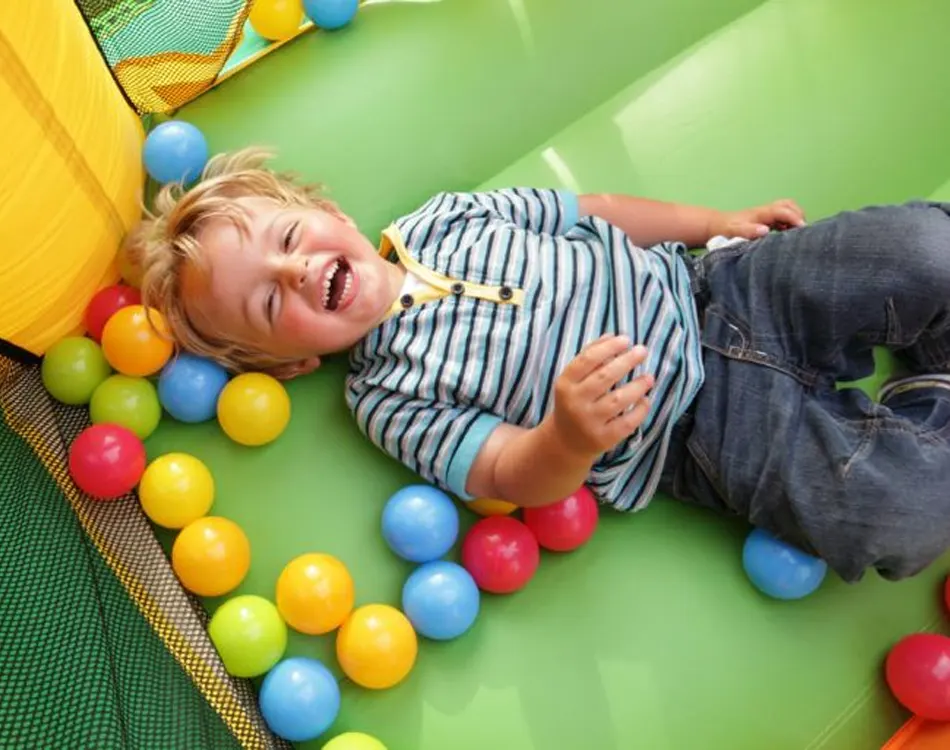
Equipos de juegos blandos para centros preescolares y guarderías
Nuestras soluciones de juegos blandos están diseñadas para crear entornos seguros, atractivos y educativos para los más pequeños. Combinando materiales duraderos con un diseño cuidado, nuestros productos de juegos blandos fomentan el desarrollo físico y cognitivo al tiempo que estimulan el juego activo. Perfectos para centros preescolares, guarderías y zonas de juego interiores, nuestra gama incluye coloridas alfombras de juego, estructuras de escalada personalizadas y elementos interactivos que fomentan la coordinación, el equilibrio y la interacción social. Cada pieza se puede personalizar para adaptarse a las necesidades únicas de su espacio, garantizando un entorno de aprendizaje divertido y seguro para niños de todas las edades.
Nuestra amplia gama de juegos infantiles
Nuestra gama de productos incluye desde vibrantes alfombras de juego hasta estructuras de escalada personalizadas, cada una de ellas diseñada pensando tanto en la diversión como en la funcionalidad. Elija entre varios artículos de juego blandos, coloridos y duraderos, como estructuras para trepar, toboganes, túneles y mucho más. Explore nuestra colección para encontrar el equipo Soft Play perfecto para crear una zona de juegos dinámica y segura para niños de todas las edades.
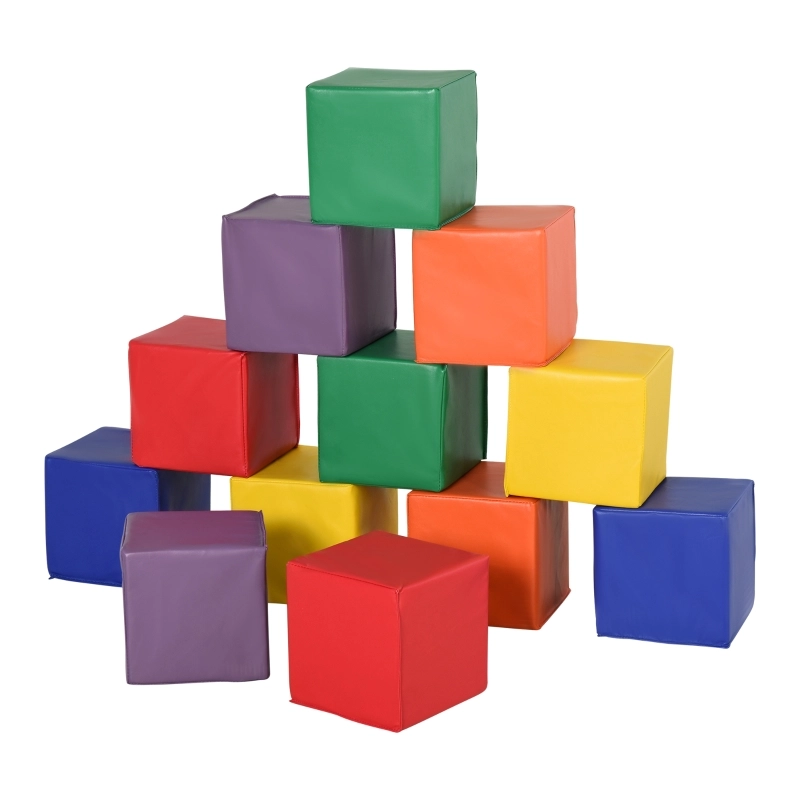
Bloques de juego blandos de 12 piezas
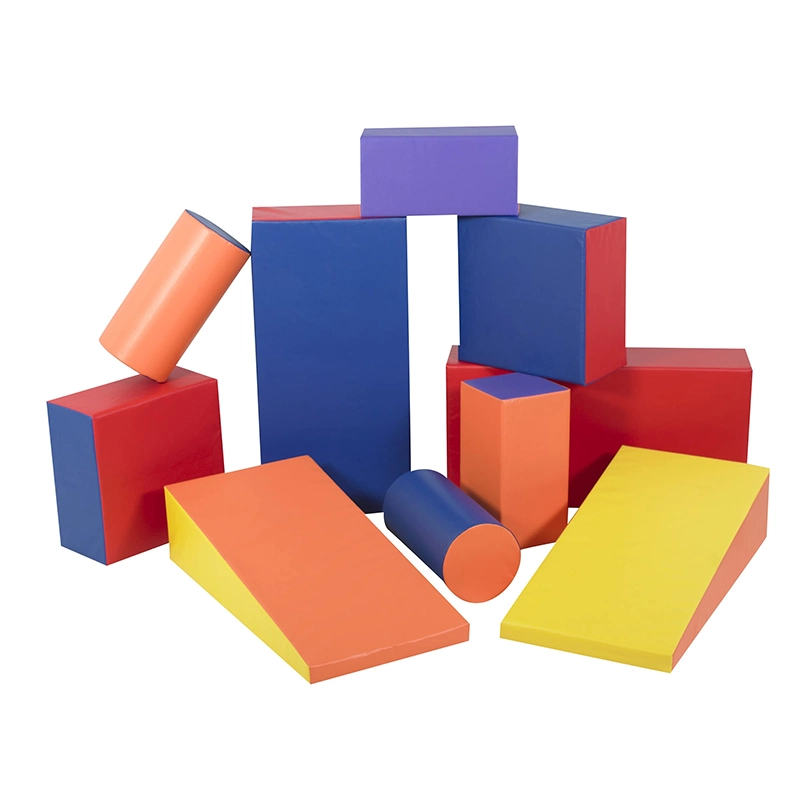
Juego de formas blandas Factory

Rincón del descanso
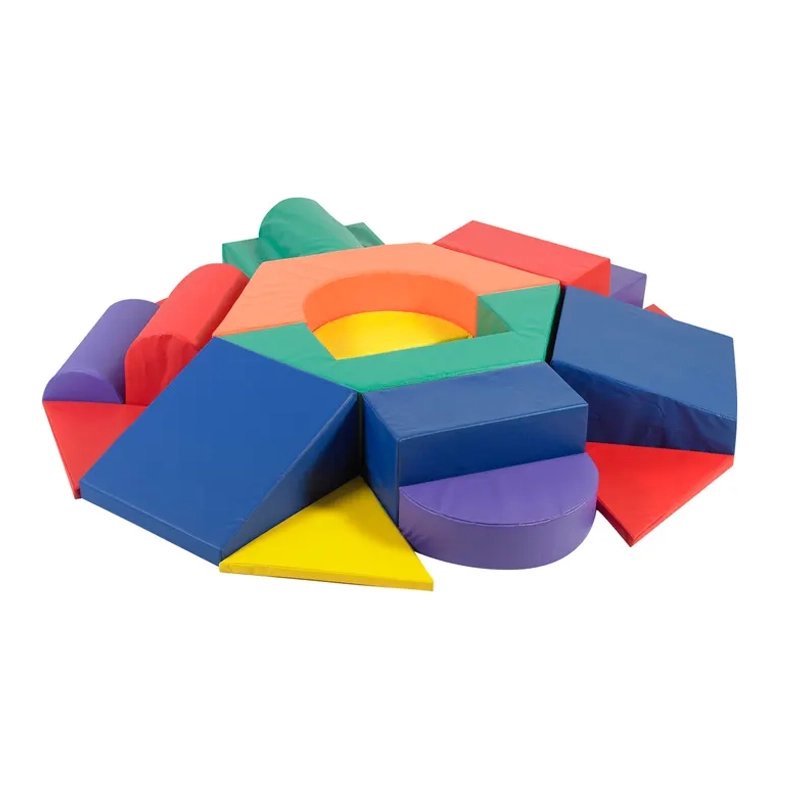
Escalador Baby Nuts and Bolts

Bloques de juego blandos de 6 piezas
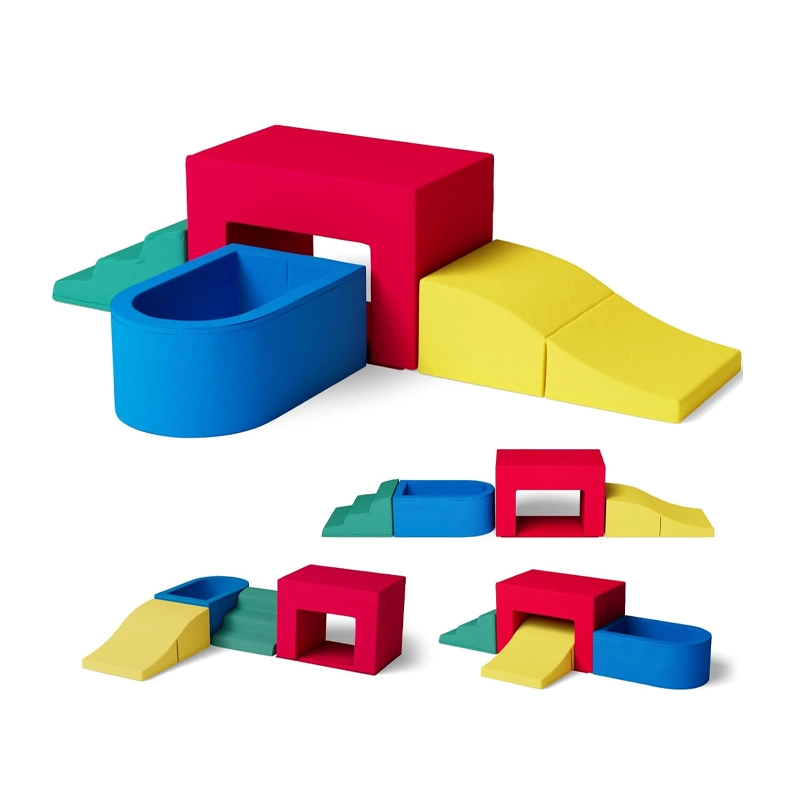
Juego de trepa blando de 4 piezas

Bloques de escalada de espuma para bebés
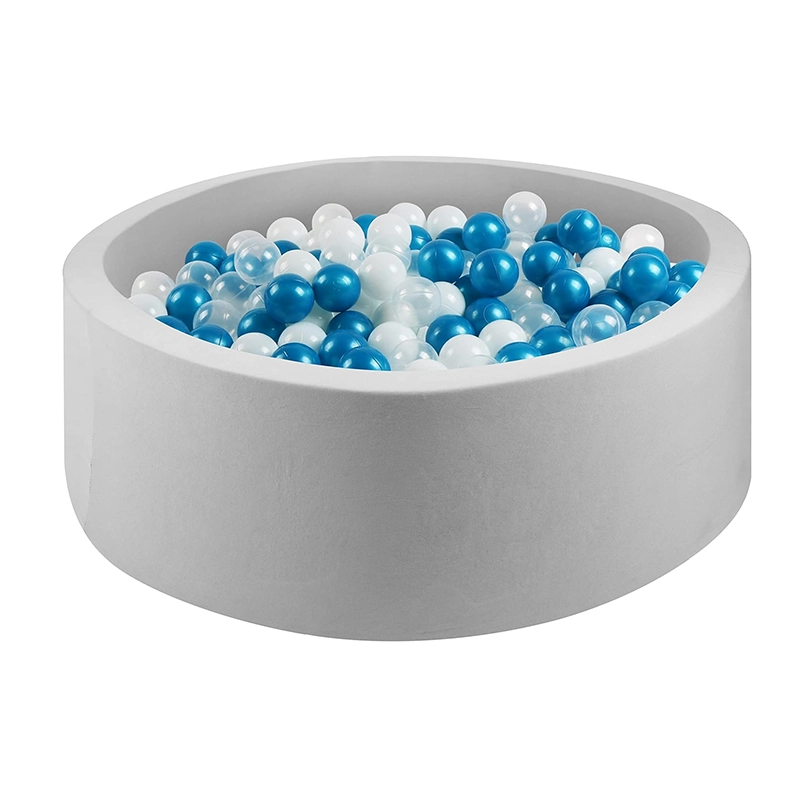
Piscina de bolas de espuma blanda

Túnel para árboles y trepador

Equipo de juegos blandos Foam Rainbow
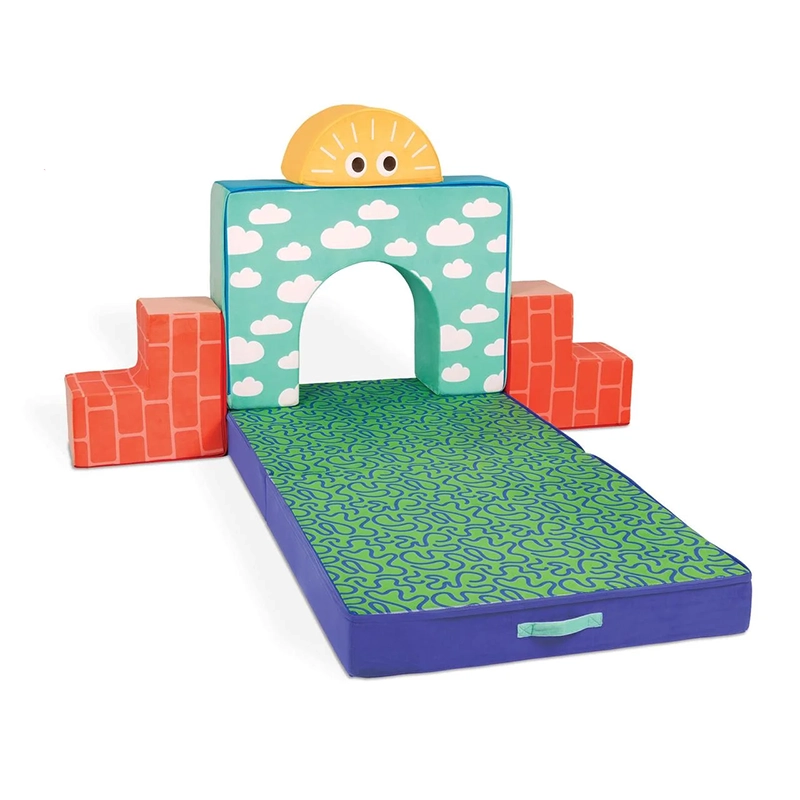
Juego de construcción Castillo Nublado
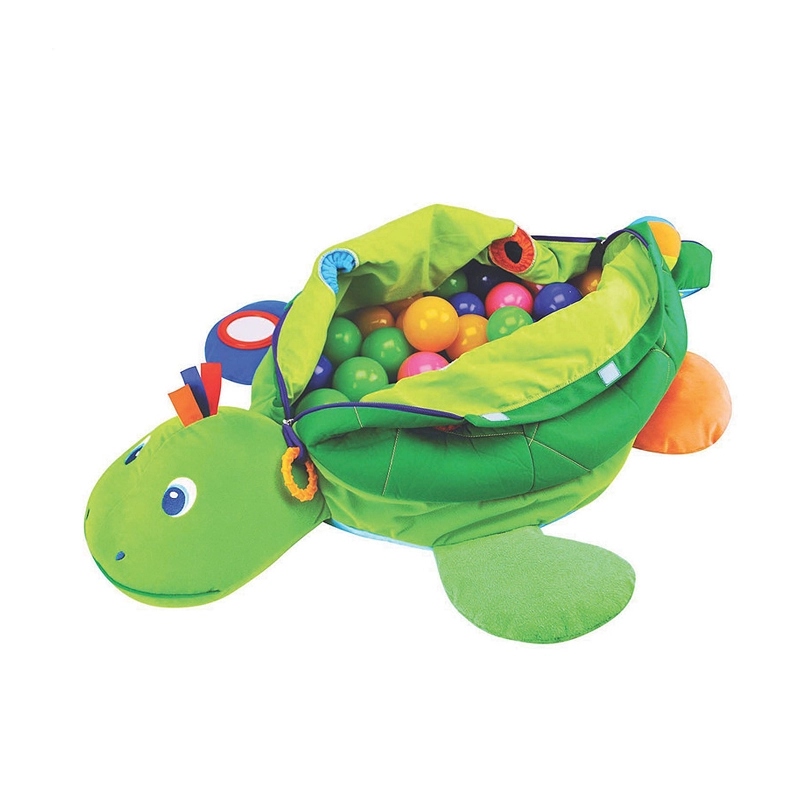
Turtle Ball Pit
fabricante y proveedor de mobiliario preescolar a medida
Con más de 20 años de experiencia en la industria del mobiliario preescolar, Winning Kidz es una marca de confianza en la creación de soluciones de juego innovadoras y de alta calidad para el desarrollo de la primera infancia. Nuestro compromiso con la artesanía y la seguridad garantiza que cada producto esté diseñado para mejorar los entornos de aprendizaje, a la vez que proporciona un espacio seguro y atractivo para que los niños crezcan y jueguen.
Nuestros productos Soft Play están fabricados con materiales duraderos y aptos para niños, y diseñados para soportar las exigencias de las áreas de juego concurridas. Desde tapetes de colores brillantes hasta creativas estructuras para escalar, nuestros equipos Soft Play promueven la actividad física, la coordinación y la interacción social. Con Winning Kidz, puede confiar en que cada pieza está diseñada para brindar diversión duradera y beneficios para el desarrollo en un entorno seguro.
Desde el uso de materiales ecológicos hasta la optimización de los métodos de producción, nos esforzamos por minimizar nuestra huella medioambiental. Al incorporar la sostenibilidad a todos los aspectos de nuestro proceso, pretendemos crear productos que no solo favorezcan el crecimiento y el desarrollo de los niños, sino que también contribuyan positivamente al futuro del planeta.

¿Qué es Soft Play?
El juego blando se refiere a un entorno de juego seguro y agradable para niños pequeños, donde pueden participar en diversas actividades utilizando materiales blandos y acolchados. Estas áreas están diseñadas para fomentar la actividad física, la creatividad y la interacción social en un entorno controlado. El juego blando incluye artículos como colchonetas, piscinas de pelotas, bloques para escalar y otros aparatos que garantizan la seguridad de los niños mientras exploran, aprenden y se divierten. El juego blando es esencial para el desarrollo infantil temprano, ya que ayuda a los niños a mejorar sus habilidades motoras, su coordinación y su capacidad para resolver problemas.
Beneficios del juego blando
Las áreas y equipos de juego blando ofrecen varias ventajas, lo que las convierte en un complemento esencial para centros preescolares, guarderías e incluso hogares. Algunas ventajas clave incluyen:
Promueve el desarrollo físico
El juego suave anima a los niños a participar en actividades físicas como trepar, saltar, gatear y mantener el equilibrio. Estos movimientos ayudan a desarrollar la motricidad, la coordinación y la fuerza, a la vez que mejoran su condición física general.
Mejora las habilidades sociales
Las áreas de juego blandas suelen fomentar el juego en grupo, lo que fomenta el trabajo en equipo, la comunicación y el compartir. Los niños aprenden a interactuar con los demás, a resolver conflictos y a trabajar juntos en un entorno social.
Impulsa el desarrollo cognitivo
Muchos elementos de juego blando, como bloques, túneles y pistas de obstáculos, estimulan el pensamiento creativo y la resolución de problemas de los niños. Estas actividades estimulan el pensamiento crítico, la percepción espacial y la capacidad de resolución de problemas.
Proporciona estimulación sensorial
Los juegos blandos ofrecen una variedad de texturas, colores y formas que estimulan los sentidos. Esto ayuda a los niños a desarrollar habilidades de procesamiento sensorial y a despertar su curiosidad a través del tacto, la vista y el movimiento.
Fomenta la exploración segura
Los entornos de juego blandos están diseñados pensando en la seguridad. Las superficies acolchadas absorben los impactos, lo que reduce el riesgo de lesiones y permite a los niños explorar y arriesgarse en un entorno seguro y controlado.
Mejora el desarrollo emocional
El juego suave puede ayudar a los niños a desarrollar confianza al afrontar desafíos como escalar o gatear por túneles. Completar tareas con éxito fomenta la autoestima y la resiliencia emocional, lo que anima a los niños a probar cosas nuevas.
Materiales para equipos de juego blando
Los juegos infantiles blandos se fabrican con diversos materiales diseñados para ser seguros, duraderos y cómodos para los niños pequeños. Estos materiales se seleccionan cuidadosamente para brindar protección física y fomentar la interacción sensorial durante el juego. Estos son los materiales más comunes utilizados en juegos infantiles blandos:
1.Caucho
- DescripciónEl caucho se utiliza a menudo por sus propiedades de amortiguación. Es un material más rígido que la espuma, pero lo suficientemente suave como para proporcionar cierta amortiguación.
- UsarLos tapetes y pisos de caucho se usan comúnmente en áreas de juegos blandos de alto tráfico, como debajo de estructuras de escalada o como piso en zonas de juego.
- Beneficios:Excelente durabilidad, resistente al agua, antideslizante y muy fácil de limpiar.
2. PVC (cloruro de polivinilo)
- Descripción:El PVC es un material plástico rígido, duradero y flexible que recubre estructuras de espuma o inflables.
- UsarEl PVC se utiliza comúnmente para el revestimiento exterior de juegos inflables como castillos inflables, piscinas de pelotas y túneles. También se puede utilizar para fabricar colchonetas blandas o toboganes recubiertos de espuma.
- Beneficios:Es impermeable, fácil de limpiar, resistente al desgaste y está disponible en una amplia gama de colores y texturas.
3.Vinilo
- DescripciónEl vinilo es un material sintético conocido por su resistencia y flexibilidad. Es similar al PVC, pero con una textura ligeramente más suave.
- Usar:Se utiliza a menudo para fabricar superficies acolchadas e inflables, como piscinas de pelotas, toboganes y túneles de juegos blandos.
- BeneficiosSuave, duradero y fácil de mantener. El vinilo también es resistente a las manchas y soporta el uso frecuente sin deteriorarse.
4. Espuma de poliuretano (PU)
- DescripciónLa espuma de poliuretano es otra opción popular para juegos blandos. Es más densa y firme que la espuma estándar, pero aun así proporciona una superficie segura para jugar.
- UsarLa espuma de PU se utiliza comúnmente en estructuras como marcos de escalada, barreras acolchadas y carreras de obstáculos.
- BeneficiosResistente, de larga duración y con mayor soporte para estructuras más grandes o pesadas. La espuma de PU también es ignífuga y soporta impactos más fuertes.
5. Nylon & Polyester Fabrics
- DescripciónEstos materiales se utilizan a menudo como cubiertas para productos de juego blando. Son telas tejidas resistentes y flexibles.
- UsarEl nailon y el poliéster se utilizan comúnmente para la capa exterior de bloques de espuma, colchonetas o artículos de juego inflables. Estos tejidos suelen estar recubiertos para hacerlos impermeables y fáciles de limpiar.
- BeneficiosLigeros, fáciles de limpiar y disponibles en varios colores y texturas para crear áreas de juego visualmente atractivas. Además, son resistentes al desgarro y al deshilachado.
6. Espuma
- DescripciónLa espuma es uno de los materiales más utilizados para equipos de juego blandos. Es ligera, acolchada y absorbe los impactos para prevenir lesiones.
- UsarLa espuma se utiliza a menudo en colchonetas acolchadas, bloques de escalada y diversas formas de juego (como cubos, cuñas y rampas). Es flexible y se puede cortar en diversas formas, lo que la hace muy versátil para crear áreas de juego blandas.
- Beneficios:Suave, absorbe los impactos, seguro para los niños y se puede cubrir con tela duradera para una fácil limpieza.
Tipos de equipos de juego blando
Los juegos infantiles blandos vienen en varios tipos, diseñados para adaptarse a diferentes edades y entornos de juego. Algunos tipos comunes incluyen:

Carreras de obstáculos

Tapetes de juego suaves

Túneles

Castillos inflables

Piscinas de pelotas
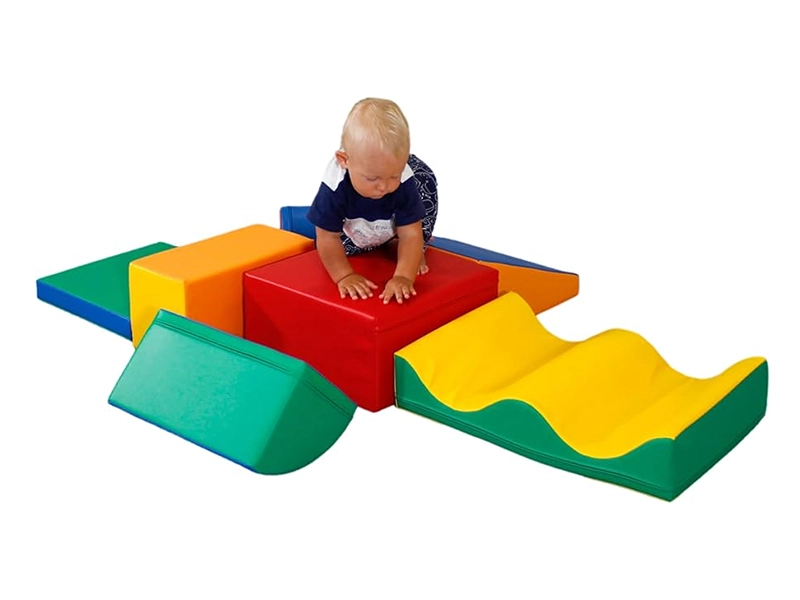
Tablas de actividades

Bloques de juego blandos

Estructuras de escalada
¿Cómo elegir el equipo de juego blando adecuado?
A la hora de seleccionar equipos de juegos blandos, es esencial tener en cuenta varios factores para garantizar que se adapten correctamente a su espacio y a los niños que los utilizan.
Grupo de edad y necesidades de desarrollo:El primer paso para seleccionar juegos infantiles blandos es comprender la edad de los niños que los usarán. Cada grupo de edad requiere diseños y características diferentes para satisfacer sus necesidades de desarrollo.
Seguridad y durabilidad:La seguridad es la prioridad al elegir un equipo de juego blando. Asegúrese siempre de que el equipo que seleccione cumpla con las normas y regulaciones internacionales de seguridad.
Espacio y distribución:Antes de elegir cualquier equipo de juego blando, mida cuidadosamente el espacio disponible. Las áreas de juego blando no solo deben caber en el espacio, sino que también deben permitir un fácil movimiento y acceso.
Tema y atractivo estético: La apariencia y la sensación del área de juego son igualmente importantes para atraer a los niños a jugar. Colores brillantes, formas interesantes y diseños temáticos pueden mejorar el ambiente general del área de juego.
Presupuesto y eficiencia de costos: Al elegir un equipo de juego blando, también debe tener en cuenta las limitaciones presupuestarias. Si bien es importante invertir en productos de alta calidad, también es necesario encontrar una solución que se ajuste a su presupuesto.
- Personalización y flexibilidad de diseño: Cada institución educativa tiene necesidades y limitaciones de espacio únicas. Por eso, elegir un proveedor que ofrezca juegos infantiles personalizables puede ser una gran ventaja.
Centro de juegos blandos vs. parque infantil tradicional
| Característica | Espejo Montessori | Espejo tradicional |
|---|---|---|
| Seguridad | Superficies acolchadas, materiales que absorben los impactos, juego supervisado. | Superficies duras, mayor riesgo de lesiones, menor supervisión. |
| Dependencia del clima | Instalaciones mayoritariamente interiores, lo que las hace adecuadas para todas las condiciones climáticas. | Configuración al aire libre, dependiendo del clima. |
| Rango de edad | Adecuado para niños más pequeños (desde niños pequeños hasta edad preescolar). | Adecuado para un rango de edad más amplio, desde niños pequeños hasta niños mayores. |
| Actividad física | Fomenta el gateo, la escalada y el juego físico suave. | Fomenta un juego más activo, como correr, columpiarse y trepar. |
| Mantenimiento | Fácil de mantener con materiales y superficies lavables. | Requiere un mantenimiento más frecuente debido a la exposición a la intemperie. |
| Eficiencia espacial | Compacto y adaptable a espacios interiores más pequeños. | Requiere más espacio al aire libre, a menudo de gran escala. |
| Supervisión | Es más fácil supervisar a los niños en un entorno controlado. | Más difícil de monitorear en espacios abiertos al aire libre. |
| Beneficios para el desarrollo | Centrarse en las habilidades motoras, la coordinación, el juego sensorial y la exploración segura. | Centrarse en la fuerza física, el equilibrio y la exploración al aire libre. |
| Costo | Mayor costo de instalación inicial para equipos interiores y mantenimiento. | El costo de instalación es menor, pero puede requerir una inversión continua para su mantenimiento. |
Centro de juegos blandos vs. parque infantil tradicional
Al instalar áreas de juego blandas, la edad de los niños que las utilizan es uno de los factores más importantes a considerar. Los juegos blandos deben adaptarse a las etapas de desarrollo y las capacidades físicas de los diferentes grupos de edad, garantizando así la seguridad y la participación de cada niño.

Juego suave para bebés (0-2 años)
Las áreas de juego blando deben centrarse en el desarrollo sensorial y motor básico de los bebés. En esta etapa, los niños apenas comienzan a explorar su entorno y a dominar sus movimientos corporales. El equipo de juego blando debe ser sencillo, seguro y fácil de usar.
Equipo recomendado:
- Tapetes y cojines suavesLas colchonetas suaves ofrecen un espacio seguro para que los bebés gateen, se den vueltas y exploren. Se pueden colocar en diversas configuraciones para estimular y fomentar el movimiento.
- Almohadillas para el tiempo boca abajo:Están diseñados para que los bebés practiquen levantar la cabeza, lo que ayuda a fortalecer los músculos del cuello y los hombros.
- Túneles de arrastre:Los túneles livianos y suaves estimulan el gateo y promueven la actividad física, desarrollando la coordinación y la fuerza en los bebés.
- Juego sensorial:Los cojines texturizados o los bloques de juego suaves con diferentes colores y patrones pueden estimular el desarrollo visual y táctil.

Juego blando para niños pequeños (2 a 4 años)
A medida que los niños pequeños empiezan a desarrollar mejor coordinación, equilibrio y agilidad, las áreas de juego blandas deben incluir equipos que fomenten la escalada, el salto y la resolución de problemas básicos. En esta etapa, los niños pequeños se vuelven más sociables y disfrutan del juego interactivo, lo que puede contribuir a su desarrollo cognitivo y social.
Equipo recomendado:
- Estructuras de escalada:Las estructuras de escalada bajas y suaves, como rampas o pequeñas colinas, pueden ayudar a los niños pequeños a desarrollar fuerza y coordinación, al tiempo que les proporcionan una sensación de logro.
- Mini diapositivas:Los toboganes fabricados con materiales suaves y acolchados brindan una forma divertida para que los niños pequeños practiquen el equilibrio y la coordinación al tiempo que garantizan su seguridad.
- Paneles de juego interactivos:Los paneles con botones, texturas y colores pueden atraer a los niños pequeños y promover el aprendizaje y la exploración sensorial.
- Áreas para gatear y saltar:Las áreas donde los niños pequeños pueden saltar o rodar son excelentes para desarrollar habilidades motoras y conciencia espacial.

Juego blando para niños en edad preescolar (4-6 años)
Los niños en edad preescolar desarrollan rápidamente sus habilidades motoras, sociales y cognitivas. A medida que adquieren más confianza, los juegos blandos pueden incluir estructuras más complejas que los desafíen física y mentalmente. En esta etapa, también es más probable que los niños participen en juegos imaginativos, por lo que es importante incorporar diseños abiertos.
Equipo recomendado:
- Carreras de obstáculos:Los recorridos de obstáculos simples con rampas, túneles y barreras blandas desafían a los niños en edad preescolar a pensar estratégicamente mientras desarrollan agilidad, fuerza y conciencia espacial.
- Muros de escalada:Las paredes de escalada bajas y acolchadas o los elementos de escalada suaves pueden ayudar a los niños en edad preescolar a trabajar la fuerza y la coordinación de la parte superior del cuerpo.
- Áreas de juego de varios niveles:Las estructuras de juego con múltiples niveles permiten a los niños en edad preescolar explorar diferentes alturas y espacios, mejorando la coordinación y fomentando el juego imaginativo.
- Casas de juegos interactivas:Esto puede incluir casitas de juegos blandas con túneles incorporados, toboganes y áreas de escalada, que ofrecen infinitas oportunidades para el juego de simulación.
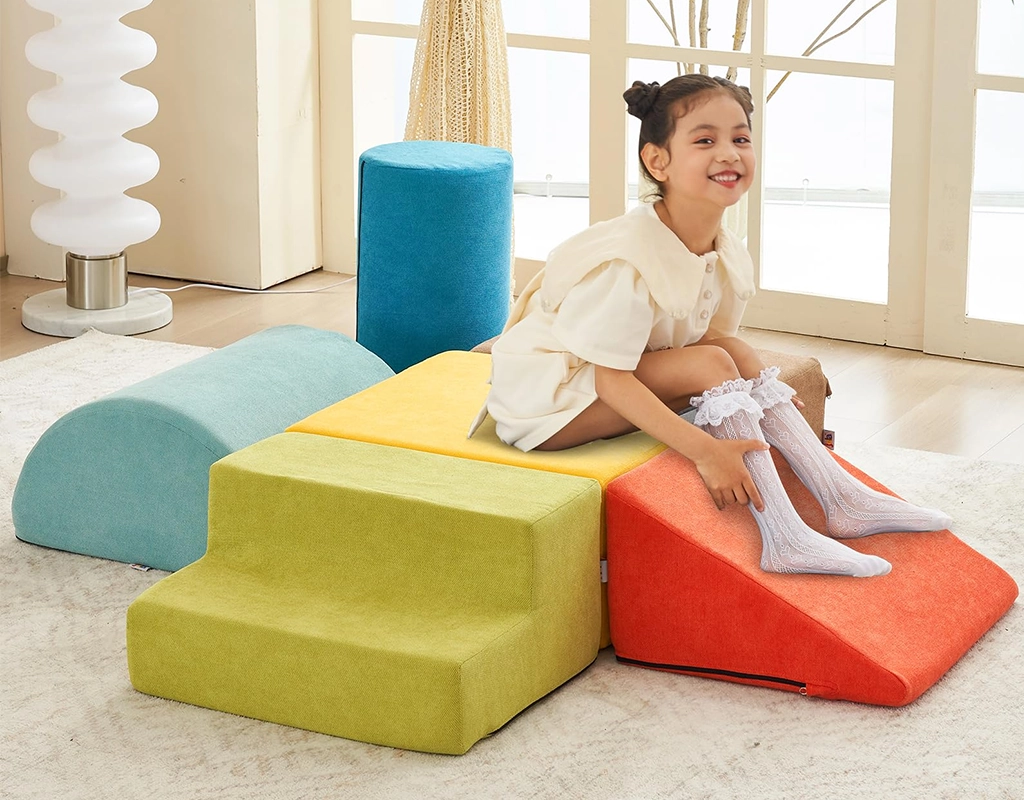
Juego blando para niños mayores (6+ años)
A medida que los niños crecen, aumentan sus capacidades físicas y su necesidad de actividades de juego más desafiantes. Para los niños mayores de seis años, las áreas de juego blandas pueden ofrecer equipos más avanzados que desafían tanto sus capacidades físicas como cognitivas. Este grupo también comienza a participar en juegos grupales más organizados, lo que contribuye al desarrollo social.
Equipo recomendado:
- Estructuras de escalada avanzadas:Los muros de escalada más altos, las escaleras y las redes proporcionan un mayor desafío y promueven la resistencia, la fuerza y la resolución de problemas.
- Vigas de equilibrio:Las vigas de equilibrio bajas pueden ayudar a mejorar la estabilidad y la coordinación al mismo tiempo que alientan a los niños a esforzarse físicamente.
- Zonas de juego de usos múltiples:Estas zonas permiten a los niños realizar diferentes actividades, como correr, saltar o gatear, fomentando la agilidad, la flexibilidad y la creatividad.
- Áreas de juego grupal:Los espacios grandes de juegos blandos con elementos interactivos como columpios, discos giratorios o áreas de escalada en grupo pueden fomentar el juego cooperativo y las habilidades sociales.
Pautas para la instalación de un centro de juegos blandos
Instalar un centro de juegos infantiles requiere una planificación minuciosa para garantizar que el espacio sea seguro, atractivo y eficiente. Aquí tienes algunas pautas esenciales a tener en cuenta al instalar tu centro de juegos infantiles:
Planificación y distribución del espacio:
- Maximizar el espacioAsegúrese de que el área sea lo suficientemente amplia como para acomodar diversos tipos de juegos blandos, como piscinas de pelotas, bloques para escalar, túneles y colchonetas. Cree una distribución que facilite el movimiento y la supervisión.
- ZonificaciónDesigne diferentes zonas para diversas actividades (p. ej., una zona para escalar, una zona para gatear, una zona para jugar con pelotas). Esto ayudará a organizar el espacio y brindará a los niños diferentes experiencias de juego.
Características y materiales de seguridad:
- Suelos blandosInstale tapetes de juego suaves o suelos acolchados en todo el centro para minimizar el riesgo de lesiones. Asegúrese de que el suelo sea antideslizante, amortiguador y fácil de limpiar.
- Equipo seguroElija equipos fabricados con materiales no tóxicos y duraderos, como espuma, vinilo y goma. Asegúrese de que todos los equipos tengan bordes redondeados para evitar esquinas afiladas.
- Barreras y puertasUtilice puertas o cercas blandas para delimitar el área de juego y evitar que los niños deambulen. Asegúrese de que sean de fácil acceso tanto para los niños como para los adultos que los supervisen.
Supervisión y dotación de personal adecuadas:
- Dotación de personalContrate personal capacitado para supervisar a los niños y mantener un entorno de juego seguro. Asegúrese de que el personal tenga conocimientos de seguridad infantil y primeros auxilios.
- VisibilidadAsegúrese de que el personal pueda ver fácilmente todas las áreas del centro de juegos infantiles, incluso a distancia. Puede lograrlo colocando estratégicamente espacios abiertos o barreras transparentes.
Accesibilidad:
- Asegúrese de que el centro sea accesible para todos los niños, incluidos aquellos con discapacidades. Considere añadir rampas, puertas más anchas y juegos sensoriales para niños con necesidades especiales.
Elija equipo apropiado para la edad:
- Tenga en cuenta la edad de los niños que usarán el espacio. Las colchonetas suaves, los bloques de escalada para niños pequeños y los juguetes de espuma son ideales para los más pequeños. Para los niños mayores, puede incluir elementos más desafiantes, como toboganes, túneles y estructuras de escalada más grandes.
- Separación por edadPara garantizar la seguridad, considere tener áreas de juego separadas para diferentes grupos de edades, como un área de juegos blandos para niños pequeños y un área de juegos blandos para niños.
Limpieza y mantenimiento:
- Materiales fáciles de limpiar:Seleccione equipos fabricados con materiales como vinilo y caucho, que son fáciles de limpiar y desinfectar.
- Limpieza de rutinaImplemente un programa de limpieza diaria para garantizar la higiene del área de juegos. Esto incluye la limpieza regular de los equipos, pisos y juguetes.
- Inspecciones regulares:Realizar controles rutinarios de desgaste en el equipo para garantizar que todo permanezca en condiciones seguras de funcionamiento.
Diseño interactivo y atractivo:
- Funciones divertidas:Agregue elementos como juguetes blandos de colores, paredes interactivas o áreas de juego temáticas para que el centro sea más atractivo para los niños.
- Juego imaginativoIncorpore elementos que fomenten el juego creativo, como cocinas blandas, bloques blandos y juegos de juguetes. Estos artículos ayudan a los niños a desarrollar su creatividad mientras juegan.
Cómoda sala de espera para padres:
- Cree una zona de espera cómoda para padres y tutores con asientos, refrigerios y una vista clara del área de juegos. Esto garantiza que los padres puedan relajarse mientras vigilan a sus hijos.
Precauciones de seguridad para áreas de juegos blandos
Garantizar la seguridad de los niños en las áreas de juego es fundamental. A continuación, se presentan las precauciones de seguridad clave que deben tenerse en cuenta al instalar y mantener una zona de juego:
-
Inspecciones regulares Los equipos de juegos infantiles deben revisarse periódicamente para detectar desgaste, como componentes sueltos, bordes afilados o materiales dañados. Inspeccionar el equipo diariamente garantiza que se identifiquen y aborden con prontitud cualquier peligro potencial.
-
Señalización de seguridad clara Coloque una señalización clara que recuerde a padres e hijos las normas y pautas de seguridad, como evitar juegos bruscos, saltar desde alturas y mantener un comportamiento adecuado dentro del área de juegos. Esto garantiza que todos conozcan las expectativas para un juego seguro.
-
Límites de peso y capacidad Los equipos de juego blando deben tener límites de peso y capacidad específicos para evitar sobrecargar la estructura. El cumplimiento de estos límites garantiza la estabilidad y la seguridad del equipo.
-
Monitorear el comportamiento de los niños Anime a los niños a jugar con seguridad y a evitar comportamientos bruscos o arriesgados, como trepar a equipos que no permiten trepar, empujar o dar codazos. Se debe enfatizar el juego suave y respetuoso.
-
Rutas de salida y procedimientos de emergencia Asegúrese de que haya rutas de salida señalizadas y de que se hayan establecido procedimientos de emergencia. En caso de emergencia, tanto el personal como los visitantes deben saber dónde están las salidas y cómo evacuar de forma segura.
-
Limpieza e higiene La limpieza y desinfección periódicas de los juegos infantiles son esenciales para prevenir la propagación de gérmenes y bacterias. Las superficies deben limpiarse con frecuencia, especialmente en zonas de alto contacto, como bloques de espuma, colchonetas y túneles.
PREGUNTAS FRECUENTES
¿Qué es el juego suave?
Los juegos blandos son entornos de juego seguros y acolchados diseñados para que los niños exploren, trepen, gateen y desarrollen sus habilidades motrices. Incluye estructuras de espuma, túneles, toboganes, colchonetas y elementos interactivos, todos ellos fabricados con materiales blandos que absorben los impactos.
¿Por qué son beneficiosos los juegos blandos para los niños?
El juego suave fomenta el desarrollo físico, la exploración sensorial, el equilibrio, la coordinación y la interacción social en un entorno seguro y controlado. También fomenta la resolución de problemas, el desarrollo de la confianza y el juego creativo.
¿Se pueden utilizar los juegos blandos al aire libre?
Sí, algunos equipos de juegos blandos están diseñados para su uso en exteriores, fabricados con materiales resistentes a los rayos UV, impermeables y duraderos. Compruebe siempre las especificaciones del producto para garantizar su idoneidad para entornos exteriores.
¿Cómo se limpian y mantienen los juegos blandos?
Limpie a diario las superficies con un desinfectante suave apto para niños y lave regularmente las fundas de tela extraíbles. En las instalaciones comerciales, la limpieza a fondo debe hacerse semanalmente o cuando sea necesario.
¿Los juegos blandos son adecuados para niños con necesidades especiales?
Sí, el juego suave se utiliza a menudo en la terapia sensorial para niños con autismo u otras afecciones del desarrollo, ya que proporciona un entorno seguro, táctil y atractivo para la exploración y el movimiento.
¿Cómo puedo montar una zona de juegos blandos en casa?
Para montar una zona de juegos blandos en casa, empiece por evaluar el espacio disponible y elegir un suelo acolchado adecuado o colchonetas de espuma para garantizar la seguridad. A continuación, elija equipos de juegos blandos adecuados a la edad, como túneles para gatear, toboganes y bloques de espuma, para fomentar la actividad física y la coordinación. Para mejorar la experiencia de juego, incorpora juguetes sensoriales de colores y asegúrate de que la zona esté limpia y bien cuidada. Por último, compruebe periódicamente la seguridad del equipamiento para que su hijo pueda divertirse sin correr riesgos.
¿Para qué edades son adecuados los juegos blandos?
Los juegos blandos suelen estar diseñados para niños de 6 meses a 6 años, aunque algunas estructuras más grandes admiten a niños mayores. Comprueba siempre la edad recomendada para cada zona de juegos o equipamiento.
¿Se pueden personalizar los juegos blandos?
Sí, las zonas de juegos blandos pueden personalizarse para adaptarse a sus necesidades y preferencias específicas. Muchos proveedores ofrecen equipos de juegos blandos personalizables, lo que le permite seleccionar el tamaño, el color, el diseño y el tipo de equipo que mejor se adapte a su espacio y a la edad de los niños que lo utilizarán. Puede elegir entre varios elementos, como bloques de espuma, túneles, toboganes y estructuras para trepar, e incluso incorporar elementos educativos como formas, números o texturas. La personalización garantiza que la zona de juegos blanda no sólo cumpla las normas de seguridad, sino que también complemente los requisitos estéticos y funcionales de su hogar o instalación.

